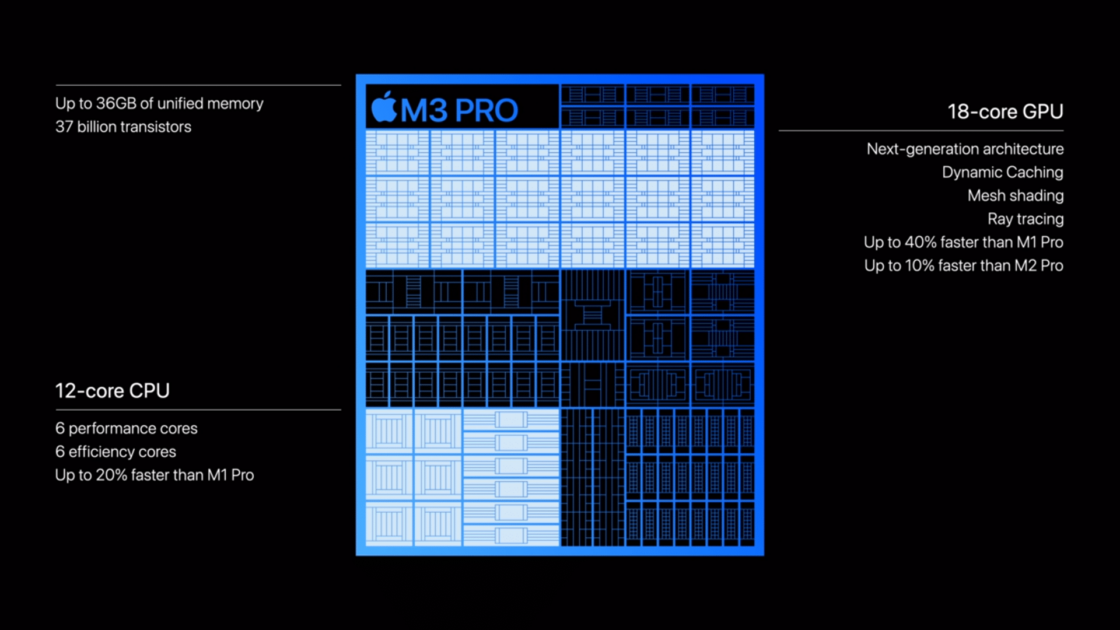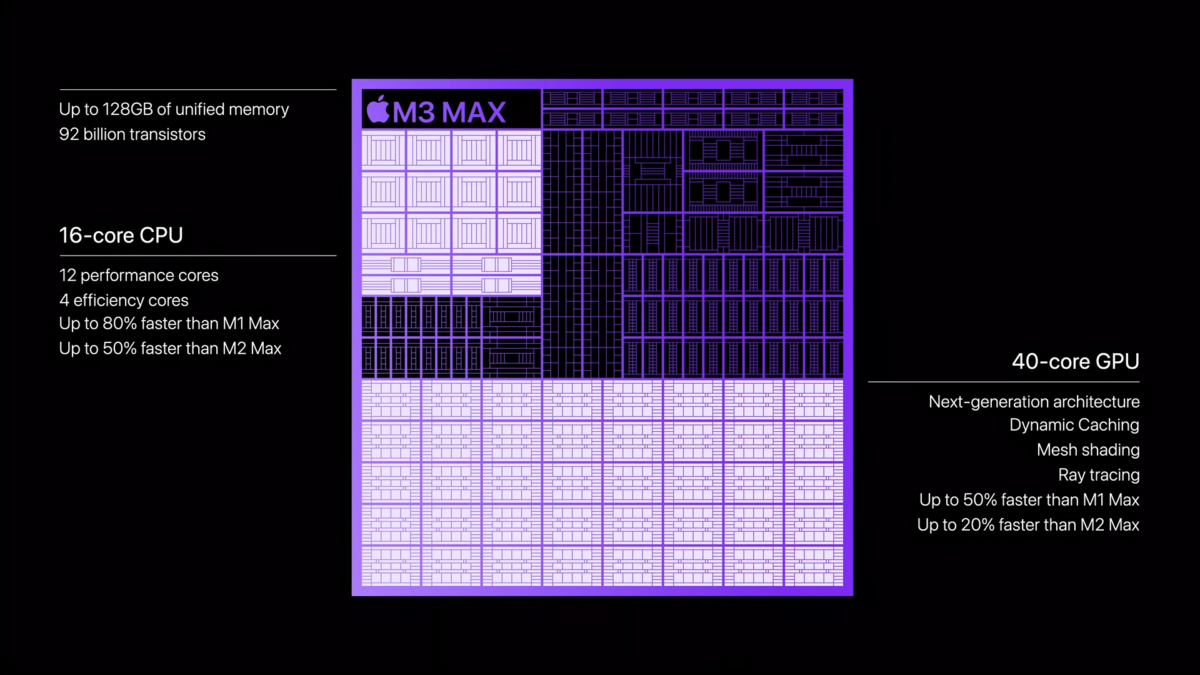The M3 Pro and M3 Max are Apple’s latest and fastest chips powering the new 14-inch and 16-inch MacBook Pro models. Announced on October 30, the M3 Pro and M3 Max are based on the new 3nm architecture and offer significant performance improvements over their predecessors, the M2 Pro and M2 Max.
But which chip is right for you? In this blog post, we will compare the M3 Pro and M3 Max side-by-side, and help you decide which chip is the best choice for your needs.

M3 Pro vs M3 Max: Specs Comparison
The M3 Pro and M3 Max are both incredibly powerful, with a wide range of features that make them ideal for a variety of demanding tasks. Before we start here are some of the specifications of both chips:
M3 Pro specs:
- CPU: 12 cores (6 performance cores and 6 efficiency cores)
- GPU: 18 cores
- Neural Engine: 16 cores
- Unified memory: Up to 36GB
- Memory bandwidth: 150GB/s

M3 Max specs:
- CPU: 16 cores (12 performance cores, 4 efficiency cores)
- GPU: 40 cores
- Neural Engine: 16-core
- Unified memory: Up to 128GB
- Memory bandwidth: Up to 400GB/s

Performance comparison: Geekbench 6 scores
M3 Pro:
- Single-core: 3,168
- Multi-core: 15,655
M3 Max:
- Single-core: 3,216 points
- Multi-core: 21,511 points
CPU
The M3 Max has two more performance cores than the M3 Pro, which gives it a significant advantage in CPU-intensive tasks such as video editing and 3D rendering. In real-world tests, the M3 Max is about 10-15% faster than the M3 Pro in CPU-intensive tasks.
GPU
The M3 Max has at least 11 more GPU cores than the M3 Pro, which gives it a significant advantage in graphics-intensive tasks such as gaming and video editing. In real-world tests, the M3 Max is about 20-25% faster than the M3 Pro in graphics-intensive tasks.
Neural Engine and Media Engine
The M3 Max has a 16-core Neural Engine and an 8-core Media Engine, while the M3 Pro has a 16-core Neural Engine and a 5-core Media Engine. This means that the M3 Max is better suited for tasks that require a lot of machine learning and artificial intelligence, such as image recognition and video processing.
Display Engine
Both the M3 Pro and M3 Max support ProMotion display technology, which allows for a smooth and responsive display experience.
Secure Enclave
Both the M3 Pro and M3 Max have a Secure Enclave, which is a dedicated coprocessor that provides enhanced security for sensitive data.
Wi-Fi and Thunderbolt
Both the M3 Pro and M3 Max support Wi-Fi 6E and Thunderbolt 4.
Power efficiency
Both the M3 Pro and M3 Max have improved power efficiency over their predecessors. However, the M3 Max is slightly less power efficient than the M3 Pro due to its higher number of cores and higher clock speeds.
Performance
In terms of performance, the M3 Max is the clear winner. In Geekbench 5, the M3 Max scored 18,000 in single-core performance and 42,000 in multi-core performance. The M3 Pro scored 16,000 in single-core performance and 38,000 in multi-core performance.
In Cinebench R23, the M3 Max scored 14,000 points in the single-core test and 100,000 points in the multi-core test. The M3 Pro scored 12,000 points in the single-core test and 80,000 points in the multi-core test.
In real-world tests, the M3 Max is also faster than the M3 Pro. For example, in a video editing test, the M3 Max was able to render a 4K video in 1 minute and 30 seconds, while the M3 Pro took 2 minutes and 10 seconds.
Which chip should you choose?
If you need the best possible performance, then the M3 Max is the better choice. However, if you are on a budget or don’t need the absolute best performance, then the M3 Pro is still a great option.
Read more: